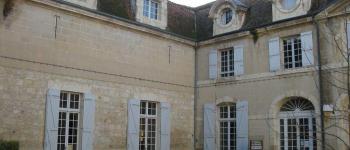
Classified as one of France's most beautiful villages, Sarrant has been a place of life and passage since Roman times. It was then called Sarrali.
A little history...
The village of Sarrant, whose origins date back to Antiquity, developed particularly during the Middle Ages around its circular enclosure. This medieval "castrum" was granted a charter of customs by the Contes de Toulouse in 1265; in 1271 Sarrant became Castrum Royal, property of the King of France.
Today, it retains its characteristic circular shape, as well as its 16th-century half-timbered and corbelled houses.
As early as the 16th century, a brotherhood of blind fiddlers testified to the village's cultural dynamism.
Records show that from around 1560 to 1660, a large number of these "violins", most of them blind, were grouped together in a kind of community that had probably been established long before. As Sarrant was a royal fief and not a seigneurial one, the blind were exempt from the "taille" tax in all royal fiefdoms, and Sarrant also had a hospital. They were also able to settle here on their way to Spain, where they enjoyed great privileges.
A rich architectural and heritage
In addition to the Confrérie des Violons aveugles (Brotherhood of Blind Fiddlers), Sarrant has offered a variety of artistic and literary activities over the centuries, often in connection with the village's medieval heritage, including the popular "Les Médiévales de Sarrant" festival from 1980 to 2010.
In Sarrant, don't miss the Reliquaire, a 14th-century illustrated treasure in the town hall!
This exceptional little medieval reliquary shrine, in cut and engraved copper, was discovered at the end of the 19th century by the nuns in a private chapel of the church. Listed as a historical monument in 1903, it probably contained relics of Saint Christine of Tuscany, whose martyrdom, inspired by the Golden Legend, is depicted on one side of the shrine.
For having broken her father's silver idols, in order to give alms to the poor Christians, the little girl was thrown into a lake with a millstone around her neck, the stone floating. Christine will then be condemned to perish in a fiery furnace from which she will emerge unscathed, before dying under the arrows. Angels will descend from heaven to crown the young martyr.
Also worth a visit is the Eglise Saint-Vincent, home to the 16th-century Piéta, restored in 2019.
Sarrant, Village de l'Illustration
In 2014, the LIRES association, in partnership with the Médiathèque départementale du Gers, initiated an internationally recognized festival around illustration. This momentum has given a new lease of life to the village, which has now become Sarrant Village de l'Illustration®.
You can go in search of illustrations in and around the village streets! And take part in the Estivales de l'Illustration, a festival held every year in Sarrant, where illustrators are honored for 5 days.
In keeping with the theme of illustration, a new creative and illustrated signage system has been installed to highlight the village's recently refurbished streets: a total of 11 illustrators have illustrated the street signs, offering an enriching range of interpretations.
The Dovecote Trail
This trail takes in 4 pigeon lofts, with the option of doing the Solomiac route (14km).
Along the way, at a place called "Ange", l'Azinet offers walks and hikes with donkeys.
Discover: medieval town, 14th-century fortified tower-gate, washhouse, fountain and dovecotes.
Sarrant town hall
9, promenade des Platanes
32120 Sarrant
Tel.: 05 62 65 00 34



